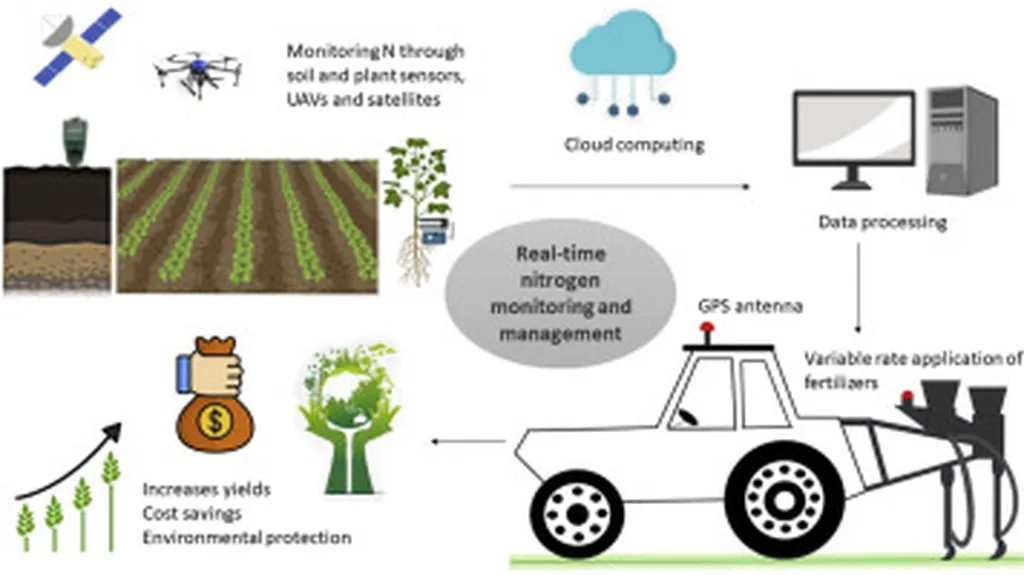In the heart of India’s agricultural landscape, a quiet revolution is taking root, one that promises to reshape the way farmers manage one of the most critical nutrients for crop growth: nitrogen. At the forefront of this transformation is Mohammad Hasanain, a researcher from the ICAR-Indian Agricultural Research Institute, Regional Station, who is pioneering real-time nitrogen management strategies that could redefine sustainable agriculture.
Nitrogen, a cornerstone of cereal-based cropping systems, is essential for enhancing yield potential. However, its inefficient use can lead to significant environmental impacts, including water pollution and greenhouse gas emissions. As global food demand continues to rise, the challenge of balancing productivity with nitrogen use efficiency (NUE) has become increasingly urgent. Hasanain’s work, published in the journal ‘Discover Soil’ (which translates to ‘Soil Exploration’), offers a glimpse into a future where technology and agriculture intersect to create more sustainable and productive farming practices.
Real-time nitrogen management involves optimizing nitrogen application timing, rates, and forms based on crop demand and environmental conditions. This is achieved through a blend of technologies, including Soil and Plant Analysis Development (SPAD) meters, Leaf Color Charts (LCCs), and advanced sensor-based systems. These tools provide real-time data on crop nitrogen status, enabling farmers to make informed decisions that balance productivity with environmental stewardship.
“By integrating these technologies, farmers can apply nitrogen precisely when and where it’s needed,” explains Hasanain. “This not only boosts crop productivity but also minimizes environmental impacts, creating a win-win situation for both farmers and the ecosystem.”
One of the most promising aspects of this approach is the use of sensor-based systems, such as optical sensors and electromagnetic induction sensors. These devices offer real-time data at a finer spatial scale, allowing for site-specific nitrogen application. This precision agriculture technique ensures that crops receive the right amount of nitrogen at the right time, enhancing NUE and reducing waste.
However, the path to widespread adoption of real-time nitrogen management is not without challenges. The cost of technology adoption, data interpretation, and farmer education are significant hurdles that need to be addressed. Hasanain emphasizes the need for interdisciplinary collaborations among researchers, extension agents, policymakers, and farmers to develop user-friendly and cost-effective solutions.
“Our goal is to create a system that is accessible and beneficial for all stakeholders,” says Hasanain. “By working together, we can overcome these challenges and pave the way for sustainable agricultural intensification.”
The potential commercial impacts of this research are substantial. For the energy sector, which often relies on nitrogen-based fertilizers, real-time nitrogen management could lead to more efficient use of resources, reducing costs and environmental footprints. Additionally, the enhanced productivity and sustainability of cereal-based cropping systems could contribute to global agri-food security, ensuring a stable supply of essential crops.
As the world grapples with the dual challenges of feeding a growing population and protecting the environment, Hasanain’s research offers a beacon of hope. By embracing real-time nitrogen management, farmers and policymakers can take a significant step towards achieving sustainable agricultural intensification, ultimately shaping a more secure and resilient future for the agri-food sector.

